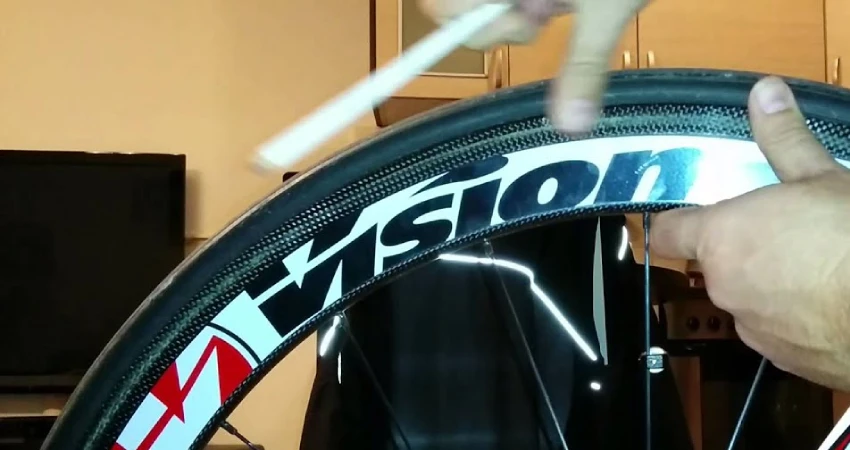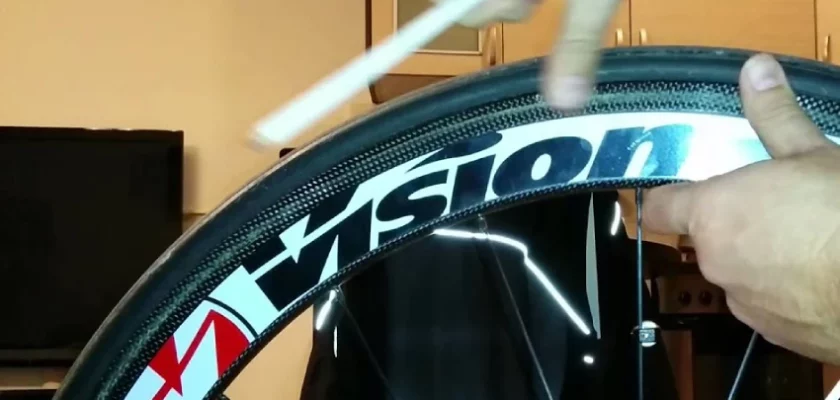Are you struggling to keep your carbon wheel braking surface clean and free from grime? Worry no more, because, in this blog article, we will show you exactly how to clean it effectively.
Carbon wheel braking surfaces require special care due to their delicate nature and their importance in ensuring proper braking performance.
By following our step-by-step instructions, you will be able to maintain your carbon wheels in top condition and optimize your stopping power. So, let’s dive right in and learn how to clean carbon wheel braking surface like a pro!
Cleaning Carbon Wheel Brakes: A Step-By-Step Guide

Carbon wheels are a popular choice among cyclists due to their lightweight and aerodynamic properties. However, cleaning the carbon wheel braking surface requires specific care to maintain its performance and extend its lifespan.
Gather the Required Materials
Before you begin cleaning your carbon wheel braking surface, make sure you have the following materials handy:
- Mild dishwashing soap
- Soft-bristled brush or sponge
- Clean water
- Microfiber cloth or towel
- Isopropyl alcohol (optional)
- Brake pads (if necessary)
- Carbon-specific brake pad cleaner (if necessary)
Step-by-Step Cleaning Process
Follow these steps to clean your carbon wheel braking surface thoroughly:
1. Remove the Wheels: Start by removing the wheels from your bike frame. This will make the cleaning process easier and more convenient.
2. Remove Excess Dirt: Use a soft-bristled brush or sponge to gently brush off any loose dirt or debris from the braking surface. Avoid using excessive force, as it can damage the carbon fiber.
3. Prepare a Soapy Solution: Fill a bucket or basin with warm water and add a small amount of mild dishwashing soap. Stir the water to create a soapy solution.
4. Clean the Braking Surface: Dip the soft-bristled brush or sponge into the soapy solution and gently scrub the carbon wheel braking surface. Pay particular attention to any areas with stubborn dirt or grime. Be cautious not to scrub too aggressively, as it may cause damage.
5. Rinse Thoroughly: Once you have finished cleaning, rinse the braking surface with clean water to remove any soap residue. Ensure that all the soap is completely washed away.
6. Dry Properly: Use a clean microfiber cloth or towel to dry the braking surface thoroughly. Make sure there is no moisture left before reattaching the wheels to your bike.
Dealing with Stubborn Stains or Brake Residue
In some cases, you may come across stubborn stains or brake residue that requires more attention. Use the following methods to address such issues:
1. Isopropyl Alcohol: If there are stubborn stains or residue on the braking surface, dampen a clean cloth with isopropyl alcohol and gently rub the affected area. The alcohol helps dissolve the grime and removes it from the surface. Rinse with clean water afterward.
2. Carbon-Specific Brake Pad Cleaner: If your brake pads have left residue on the braking surface, consider using a carbon-specific brake pad cleaner. Follow the manufacturer’s instructions and use the cleaner on the affected areas. Rinse thoroughly with clean water afterward.
Tips for Maintaining Carbon Wheel Braking Surface
To keep your carbon wheel braking surface in top condition, consider the following tips:
1. Regular Inspections: Periodically inspect your carbon wheel braking surface for any signs of wear, scratches, or damage. If you notice any issues, it’s essential to address them promptly to prevent further damage.
2. Avoid Abrasive Cleaners: Never use abrasive cleaners, harsh chemicals, or stiff brushes on your carbon wheel braking surface. These can cause scratches and compromise the integrity of the carbon fiber.
3. Clean After Wet Rides: If you’ve ridden your bike in wet conditions or on muddy terrain, make sure to clean the carbon wheel braking surface as soon as possible. This prevents any trapped dirt or debris from causing damage or affecting your bike’s braking performance.
4. Optimize Brake Pad Performance: Maintaining your brake pads is crucial to ensure efficient braking and to minimize wear on the braking surface. Regularly inspect your brake pads and replace them if they are worn or damaged.
5. Seek Professional Help if Required: If you are unsure about cleaning your carbon wheel braking surface or notice significant damage, it is best to consult a professional bike mechanic for assistance.
Frequently Asked Questions
What is the best method to clean a carbon wheel braking surface?
To clean a carbon wheel braking surface, use mild soap and warm water. Gently scrub the surface using a soft brush, avoiding abrasive cleaners or harsh chemicals.
Can I use a pressure washer to clean the carbon wheel braking surface?
No, it is not recommended to use a pressure washer as the high-pressure water can damage the delicate carbon fibers. Stick to using mild soap and a soft brush for cleaning.
How often should I clean my carbon wheel braking surface?
Clean your carbon wheel braking surface after every ride in wet or muddy conditions, and at least once a month for regular maintenance.
Should I remove the brake pads before cleaning the carbon wheel braking surface?
It is not necessary to remove the brake pads for regular cleaning. However, inspect them for any debris or wear and clean them if needed.
Can I use alcohol or solvents to clean the carbon wheel braking surface?
No, avoid using alcohol or solvents as they can damage the carbon surface. Stick to using mild soap and warm water for safe and effective cleaning.
Final Thoughts
In conclusion, maintaining clean carbon wheel braking surfaces is crucial for optimal performance and safety. By following the proper cleaning procedures, cyclists can prolong the lifespan of their carbon wheels and enhance their braking performance.
Regularly cleaning the braking surface with a mild soap solution, avoiding harsh chemicals or abrasive materials, and using a soft brush or cloth can effectively remove debris and brake residue without damaging the carbon surface.
Additionally, inspecting the braking surfaces for any signs of wear or damage is essential to ensure safe cycling. By implementing these cleaning practices, cyclists can enjoy smooth, efficient braking and extend the lifespan of their carbon wheel braking surfaces.

